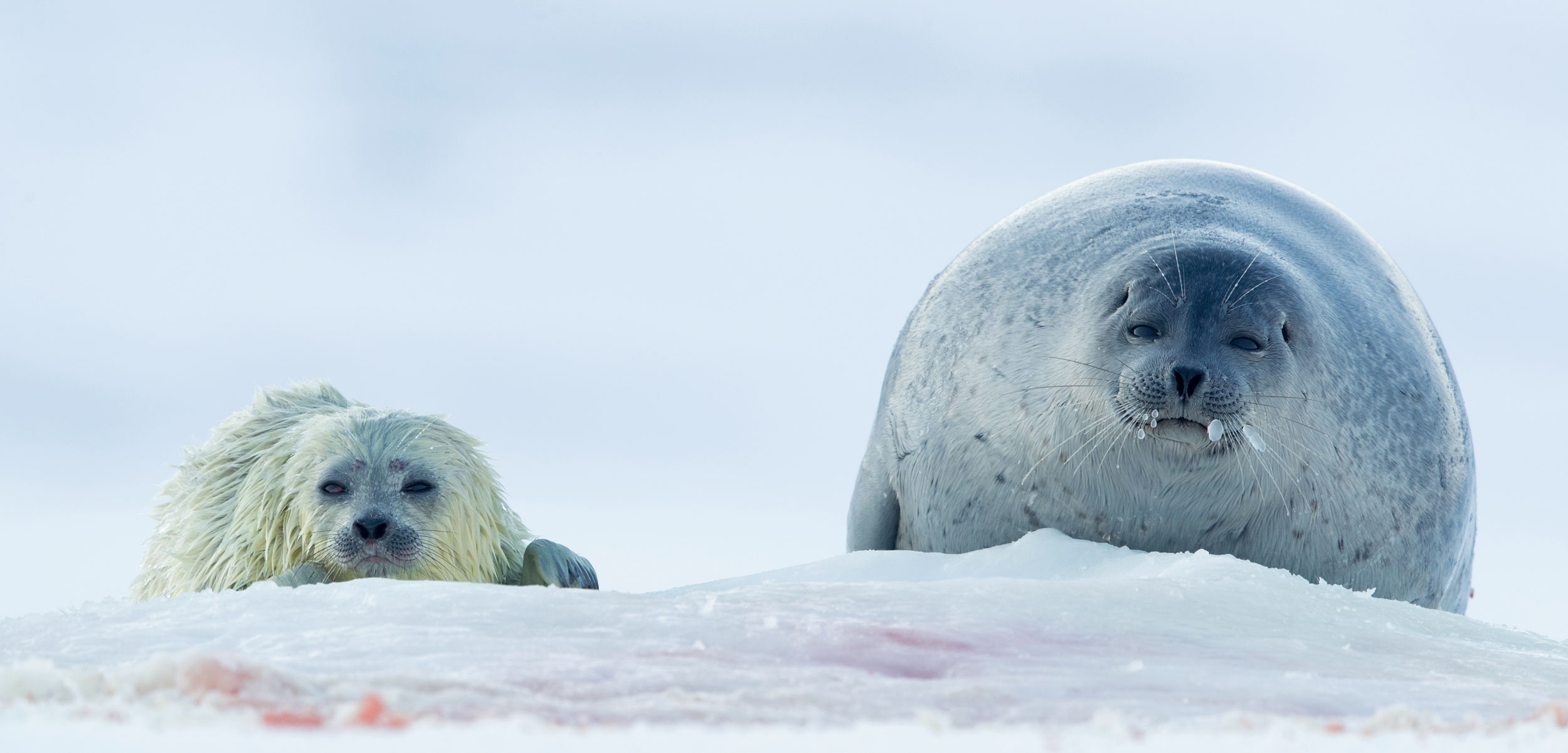The Precarious Protection of Alaska’s Ringed Seals
The State of Alaska is petitioning the federal government to take ringed seals off the endangered species list. Others say not so fast.
Article body copy
Alaska’s ringed seals need snow to protect their pups. By the end of the century, there may not be enough in their icy habitat for the species to survive. That dispiriting future is what a 2012 decision to list the species under the Endangered Species Act (ESA) sought to prevent. Now, for the second time in just seven years, the listing is facing political pushback. The State of Alaska has petitioned the US federal government to remove the seal from the ESA, arguing there are too many question marks to justify preemptive protections.
The petition to delist was jointly filed by the Alaska Department of Fish and Game (ADFG) and three Alaskan Indigenous organizations on the basis that ringed seal populations appear stable.
Recent data collected from subsistence harvests across Alaskan waters indicates the animals are well fed. Their blubber is within healthy levels, and the proportion of pups seems to be on the rise. Aerial surveys peg the population between two and seven million.
“Ringed seals seem to be doing pretty well right now,” says ADFG wildlife science coordinator Chris Krenz. Given that there are millions of these animals, there is a lot of flexibility within the population, says Krenz, adding that conservation resources are finite. “This listing takes away from other species that need help more than ringed seals do.”
But other experts caution against removing protections, stating that a warming Arctic could deliver a fatal blow to the species in the future. The seals raise their young in deep snow lairs, which provide both warmth and protection from predators. Recent models suggest that changes in snow accumulation could see ringed seal populations drop by at least 50 percent by 2100.
And changing sea ice conditions could also be problematic. “Snow that falls in the autumn may fall on open water, so an increase in snowfall over an area may not necessarily translate to more snow available to ringed seals,” explains University of Alberta researcher Jody Reimer, who led the population modeling study.
Peter Boveng, a marine biologist at the US National Oceanic and Atmospheric Administration’s Alaska Fisheries Science Center, feels it’s too early to give ringed seals a lasting bill of health. Summer ice hit record lows last year and, even though the seasonal winter ice these seals rely on has remained comparatively stable, that security is likely temporary. The original listing, says Boveng, was largely a prophylactic measure against what’s to come: “Major habitat loss for the species.”
For this reason, the United States Court of Appeals ruled to uphold protections for ringed seals when the listing came under fire last year. The ESA states that a species must be listed if the threat of extinction exists in the foreseeable future.
Staff with the ADFG argues the definition of foreseeable is too muddy when the various long-range climate forecast methodologies produce different predictions. “The projections suggest it will be decades before we even anticipate seeing [population] declines,” says Krenz. “And we don’t really understand the mechanism that will drive them.” Premature listing, he says, causes more problems than waiting for clearer data.
Supporters of the listing, however, believe removing protections ignores the legal obligations set forth by the ESA.
“The argument that we should only list once a population is declining—or once the species is seriously hurting—undercuts the whole purpose of the ESA,” says Emily Jeffers, a lawyer with the Center for Biological Diversity. Along with her colleagues, Jeffers is working to fight the Trump administration’s recent decision to deny another Arctic pinniped—the Pacific walrus—ESA status.
“No one is really disputing that the ice is melting,” says Jeffers. “It’s clear. And yet, the arguments to deny protections for wildlife are getting more and more convoluted.” The walrus denial document, for example, states that the species is “intelligent, adaptable, and able to make the necessary adjustments needed to persist.”
“It’s easy to say ‘Well, we don’t know. Maybe they’ll be fine’,” says Jeffers. “It’s very common for [petitioners] to hang their hats on scientific uncertainty.”
The ringed seal delisting petition also points to added costs and regulatory steps for resource extraction and other industrial activities, and threats to traditional harvests.
Ringed seals are culturally important to Alaskan Indigenous communities. While the ESA does include robust exemptions for subsistence hunting, they can be overruled if species conservation deems them necessary. “That’s a major concern for these coastal communities,” says Krenz. “They hunt seals for food, materials, and traditional crafts. Restricting harvest threatens their heritage.”
A 90-day assessment period for the petition began on March 26, and the debate surrounding the document is just as important as its outcome.
“There are a lot of unknowns,” says Reimer. “And we may very well not be able to say anything with enough certainty to list a species under the ESA.” The recent decisions are likely the first in a wave of future listing proposals with climate change as the main threat. Very few such listings are currently standing.
“This is one of the contemporary challenges in conservation biology,” says Reimer. “It will be interesting to see how we, as a society, decide to handle these many layers of uncertainty.
